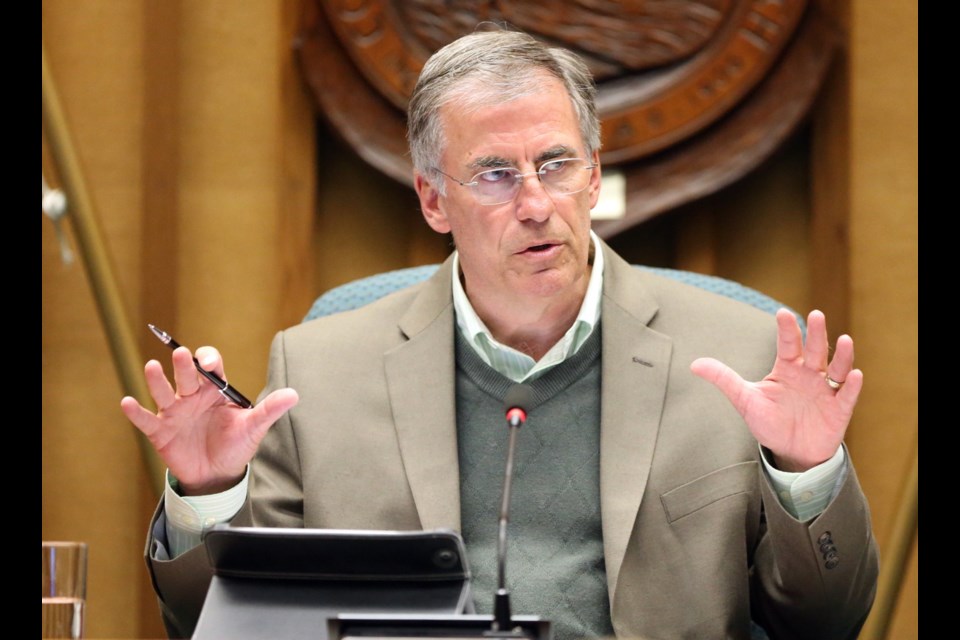Victoria Mayor Dean Fortin says he doesn’t know what it would take to bring in tough new regulations for motorized wheelchairs, but he believes there are better, different options to accommodate the changing demographics of the aging population.
Fortin was responding Friday to news that Sidney council’s call for regulation, training and testing of motorized wheelchairs and their users has been backed by the Union of B.C. Municipalities. Sidney’s resolution states that without regulation, the safety of all motorists, businesses and pedestrians is at risk.
“It would be regretful if we had to get down to that level of regulation and enforcement,” Fortin said.
The city recognizes that an increasing number of older people will remain mobile by using motorized wheelchairs, Fortin said. “How do we build the infrastructure to accommodate the changes that are coming? Is it wider sidewalks? Is it separated sidewalks?”
The mayor said infrastructure improvements would be a larger challenge than regulation.
“You can’t widen every sidewalk in Victoria overnight. But as you put sidewalks in, you can start making accommodation,” Fortin said.
Spokesmen for both the Insurance Corp. of B.C. and the Insurance Bureau of Canada did not know of any jurisdiction in Canada where motorized wheelchairs are required to be licensed or insured.
In B.C., drivers of motorized wheelchairs are not required to have a driver’s licence or insurance. Registration and licence plates are also not required. The chairs — commonly called electric scooters — can be used on sidewalks and roads, following the same rules as pedestrians.
Saanich Mayor Frank Leonard said he wasn’t sure how he would vote on the resolution at the UBCM convention next month in Vancouver.
“I do tend to resist more laws and more regulations when there may be other options,” Leonard said. “I’m not convinced we’re at the point to regulate.”
Saanich is building wider sidewalks than before, he said.
“Everything we build is wide enough for two scooters to pass. Our Cedar Hill-Shelbourne area has lots of seniors and supportive housing. We have scooters passing [each other] now.”
ICBC advises mobility-chair drivers to travel at the same speed as pedestrian traffic, to avoid sudden turns and not to use motorized wheelchairs if taking medication, drugs or alcohol.
Fortin said that when he test-drove an electric wheelchair, he quickly found out the challenges faced by users.
“People didn’t see me. And I think they had the assumption that I could stop … more quickly than I could. It was very heavy and much like a big boat. You have to take time to slow down and turn around.”
Pedestrians have to recognize the limitations of motorized wheelchairs, Fortin said. “But patience on both sides is always a good starting point.”
Transportation Minister Todd Stone issued a statement Friday saying that it would not be appropriate to respond in advance to any resolution that may be amended during the UBCM convention.
“Government is working on these resolutions now and looks forward to discussing them with local governments at UBCM.”



